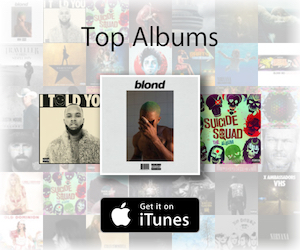By Greg Mills
Having written quite a few articles under the Greg’s Bite banner for Apple Daily Report, a couple of years back I took some time out to develop a medical diagnostic device that is used to detect Alzheimer’s Disease as much as 20 years out. That project has kept me off the streets and out of trouble, but I always enjoyed prognosticating on what the great brain trust in at Apple was doing.

I predicted Apple would launch a cool 3D printer, 3D software, an STL file store and a 3D scanner perhaps using iPhone or iPad technology. Well, that hasn’t happened yet, but it still could.
Predicting Apple’s new product lines has always been hit and miss, but typically, business movements that become public hint at what is to come. Case in point: digital hearing aids. Apple’s thinking when it comes to new products: disrupt an established market that is substantial enough to make serious money, find a product that people need and want but don’t like for various reasons, and fix it. In other words, make Apple products interactive leading to more sales of existing Apple products.
Apple has always had a soft spot for the disabled. I’m not seriously disabled but, for some time now, I have had trouble hearing women’s voices and little kids with a high pitched voice. Yep, I have a hearing loss in the high frequencies. I erroneously figured that as long as I could hear things, the issue with high frequencies wasn’t that big a deal. Well, my wife and daughter have been ragging on me for a while now to get fitted with hearing aids.
Recently, I stopped by the hearing aid booth at my local Sam’s Warehouse and did a hearing test. My higher frequency hearing was off substantially, as expected. The Sam’s folks put some high end hearing aids on me, and I began to hear the snap crackle and pop of things swishing and clicking that I was’t used to hearing.
Frankly, it’s a noisier world than I remembered. I did notice a quality in people’s voices that was more full and vibrant. I could have still heard most voices but the quality was more interesting.
Since the hearing aid industry is commission driven, the hard sell came next. That I could hear better and have a better quality of sound ought to have been enough, but they tried to tell me that ,since I was diagnosed with a hearing loss, failing to start using a hearing aid was going to increase my risk factor for dementia. Wait just a minute! Dementia is what I have been researching and it was counter intuitive that not hearing a full array of sound would make me demented. I did’t believe it.

I did some research; the association of hearing loss and dementia is pretty well established but the devil is in the data interpretation. Numerous studies and even more numerous articles by hearing aid companies touted the connection of hearing loss and dementia.
Interestingly, I found that the commission-rich hearing aid industry had taken the facts out of context and, rather than suspecting that hearing loss was a part of the brain deterioration of Alzheimer’s or other form of dementia, they turned that data around and claimed the symptom of hearing loss caused the brain disease itself. The FDA needs to crack down on this issue.
The hearing aids I was offered were $1,800 per hearing aid. I was told that the hearing aids had Bluetooth to allow them to adjust them for each person and both ears separately. I thought I could use them as Bluetooth ear buds, but no, that would cost me another $175 for an accompanying device.
I believe this meant that the hearing aid companies had disabled normal paring over Bluetooth and being forced to buy another device was a bunch of crap. I decided to look around for hearing aids that where open to paring with other Bluetooth devices.
It turns out I was right, Costco had a brand of hearing aids called Kirkland Hearing Aids. These babies are “Made for iPhone, iPad and iPod.” Costco has cut the competition in half, price wise, and sells the current version of the Kirkland Signature 6 for $1,800 for a pair.
This was half the cost of the Sam’s devices and I got open Bluetooth paring with my iPhone. There is an app that allows you to adjust the Kirkland hearing aids for volume or location where different settings are useful. I have made a few phone calls using the iPhone and the hearing aid and it works well and the sound is superior to holding it up to my ear.
Back to my original thought. What if Apple were to launch ear buds that, in addition to playing audio, offered hearing impaired people hearing aid functions. Just crank up the treble for me and Apple ear buds would put the hearing aid industry our of business for me!
The market for hearing aids is growing dramatically and will exceed $8 Bbillion dollars a year soon. Finally, the kicker, search the United States Patent & Trademark Office web site for the terms “Apple” assignee and “hearing aid” — 28 patent applications pop up that have been filed in the last eight years.

In Apple filling with the Federal Communications Commission (FCC) showed that the company is urging the FCC should “recognize solutions such as the MFi hearing aid platform as alternatives for hearing aid compatibility compliance.” Apple’s MFi (“Made for iPhone/iPod/iPad”) is a is a licensing program for developers of hardware and software peripherals that work with these iDevices. Companies joining the MFi program and passing certification tests are able to display certain MFi-related logos on their product packaging.

